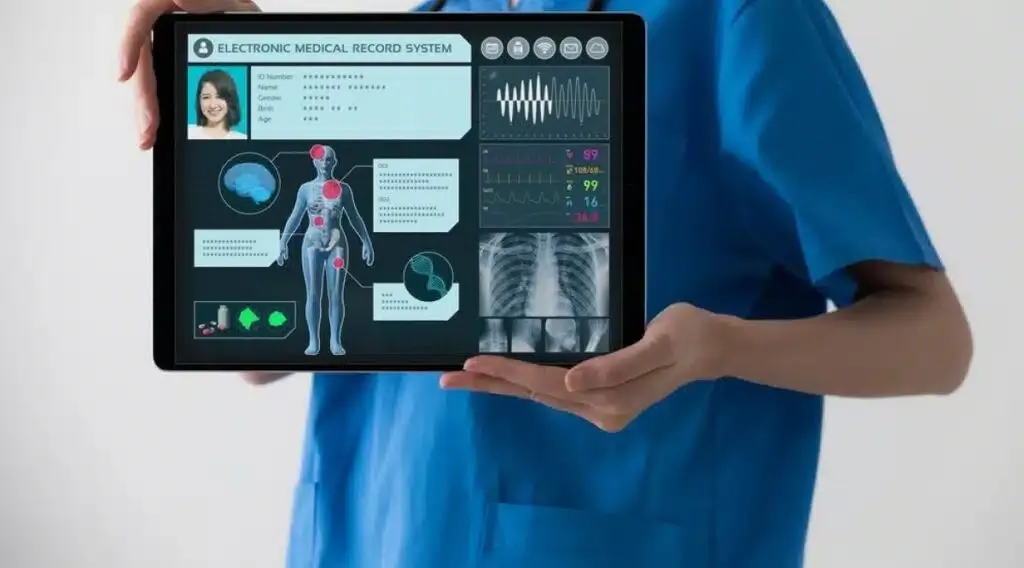
Nurse Practitioner Primary Care Role Manages 60-80% of Preventive Services
2025
Nurse Practitioners (NPs) have emerged as essential primary care providers, managing 60-80% of primary and preventive care services according to the American Nurses Association, addressing the critical physician shortage while delivering high-quality, cost-effective healthcare across diverse populations and settings.
Build the future you deserve. Get started with our top-tier Online courses: ACCA, HESI A2, ATI TEAS 7, HESI EXIT, NCLEX-RN, NCLEX-PN, and Financial Literacy. Let Serrari Ed guide your path to success. Enroll today.
Primary Care Provider Shortage Solution
Healthcare Access Crisis:
- Projected shortage of 24,000 primary care physicians by 2025
- Rural and underserved area provider shortages
- Aging population increasing healthcare demands
- Specialty care versus primary care physician preferences
- Geographic maldistribution of healthcare providers
Nurse Practitioner Response:

- Over 365,000 licensed NPs nationwide
- 89% providing primary care services
- Independent practice authority in 26 states and DC
- Full practice authority legislative advancement
- Collaborative practice agreements where required
Scope of Practice and Clinical Capabilities
Comprehensive Primary Care Services:
- Health assessment and physical examination
- Diagnosis and treatment of acute and chronic conditions
- Medication prescribing and management
- Health promotion and disease prevention
- Patient education and counseling
Preventive Care Delivery:
- Routine health screenings and examinations
- Immunizations and vaccination programs
- Cancer screening and early detection
- Cardiovascular risk assessment and management
- Mental health screening and intervention
Chronic Disease Management:
- Diabetes care and monitoring
- Hypertension and cardiovascular disease
- Respiratory conditions and COPD
- Mental health and substance abuse
- Geriatric care and age-related conditions
Educational Preparation and Competency
Advanced Practice Education:
- Master’s degree or Doctor of Nursing Practice (DNP) degree
- Clinical specialty focus and concentration
- Extensive clinical practicum and preceptorship
- National certification examination passage
- State licensure and regulatory compliance
Continuing Competency Requirements:
- Continuing education and professional development
- Certification maintenance and renewal
- Quality improvement and evidence-based practice
- Professional organization membership and participation
- Peer review and collaborative consultation
Clinical Decision-Making Skills:
- Differential diagnosis and clinical reasoning
- Evidence-based practice and guideline application
- Risk assessment and patient safety
- Collaborative care and referral management
- Quality improvement and outcome measurement
Practice Settings and Delivery Models
Traditional Primary Care:
- Family practice and internal medicine clinics
- Pediatric and women’s health services
- Community health centers and FQHCs
- Rural health clinics and critical access hospitals
- Retail clinics and urgent care centers
Innovative Care Delivery:
- Telehealth and virtual consultation
- Mobile health and community outreach
- Workplace and occupational health
- School-based and campus health services
- Home visits and house calls
Team-Based Care:
- Medical home and patient-centered care
- Interprofessional collaboration and coordination
- Care coordination and case management
- Population health and community wellness
- Value-based care and quality outcomes
Ready to level up your career? Join our expert-led Online courses in ACCA, HESI A2, ATI TEAS 7, HESI EXIT, NCLEX-RN, NCLEX-PN, and Financial Literacy. At Serrari Ed, we turn potential into achievement. Start your journey today!
Quality Outcomes and Patient Satisfaction

Clinical Effectiveness:
- Comparable outcomes to physician-delivered care
- High patient satisfaction and experience scores
- Reduced hospital readmissions and complications
- Improved chronic disease control and management
- Enhanced preventive care delivery and compliance
Cost-Effectiveness:
- Lower healthcare costs and resource utilization
- Reduced emergency department visits
- Decreased specialist referrals and consultations
- Improved efficiency and access
- Value-based care and outcome achievement
Patient Experience:
- Longer appointment times and patient interaction
- Enhanced communication and patient education
- Holistic and patient-centered approach
- Cultural competency and sensitivity
- Family involvement and support
Regulatory Environment and Practice Authority
Full Practice Authority States:
- Independent assessment, diagnosis, and treatment
- Prescriptive authority without physician oversight
- Hospital privileges and admitting rights
- Referral and consultation coordination
- Quality assurance and peer review
Collaborative Practice States:
- Physician collaboration and oversight requirements
- Structured collaborative agreements
- Supervision and consultation protocols
- Prescriptive authority limitations
- Practice setting restrictions
Legislative Advancement:
- Scope of practice expansion advocacy
- Professional organization lobbying and support
- Evidence-based policy development
- Stakeholder engagement and coalition building
- Public awareness and education campaigns
Specialization and Advanced Practice
Primary Care Specialties:
- Family Nurse Practitioner (FNP)
- Adult-Gerontology Primary Care NP
- Pediatric Primary Care NP
- Women’s Health Nurse Practitioner
- Psychiatric-Mental Health NP
Emerging Specializations:
- Population health and community nursing
- Telehealth and virtual care delivery
- Integrative and holistic health
- Pain management and palliative care
- Occupational and environmental health
Leadership and Administrative Roles:
- Clinical director and manager positions
- Quality improvement and patient safety
- Population health and care coordination
- Policy development and advocacy
- Professional education and mentorship
Technology Integration and Innovation
Electronic Health Records:

- Clinical decision support and guidelines
- Population health management and analytics
- Quality measurement and reporting
- Care coordination and communication
- Patient portal and engagement tools
Telehealth and Virtual Care:
- Remote consultation and assessment
- Chronic disease monitoring and management
- Mental health and counseling services
- Patient education and self-management
- Care coordination and team communication
Mobile Health and Apps:

- Patient monitoring and communication
- Medication management and adherence
- Symptom tracking and reporting
- Health education and promotion
- Emergency contact and response
Future Trends and Opportunities
Healthcare Delivery Evolution:
- Value-based care and population health
- Integrated care and medical homes
- Community-based and mobile services
- Precision medicine and personalized care
- Global health and international practice
Technology Advancement:
- Artificial intelligence and clinical decision support
- Predictive analytics and risk stratification
- Genomics and precision medicine
- Virtual reality and simulation training
- Blockchain and secure data sharing
Professional Development:
- Doctoral preparation and DNP degree
- Leadership and executive education
- Research and evidence-based practice
- Entrepreneurship and practice ownership
- Policy influence and advocacy
Economic Impact and Value
Healthcare Cost Reduction:

- Lower per-visit costs compared to physicians
- Reduced overall healthcare utilization
- Preventive care and early intervention
- Chronic disease management and complications
- Emergency department diversion and alternatives
Access Improvement:
- Increased provider availability and capacity
- Geographic reach and rural service
- Cultural competency and community connection
- Flexible scheduling and convenience
- Language accessibility and communication
Quality Enhancement:
- Evidence-based practice and guidelines
- Patient safety and risk management
- Continuous quality improvement
- Professional development and competency
- Patient satisfaction and experience
The expansion of nurse practitioner roles in primary care represents a fundamental transformation in healthcare delivery, providing essential services that address provider shortages while maintaining high-quality, patient-centered care across diverse populations and communities. This impacts registered nurses, nurse practitioners, healthcare professionals, primary care providers, and the broader healthcare industry.
Source: American Nurses Association – Primary Care Statistics
Ready to take your career to the next level? Join our Online courses: ACCA, HESI A2, ATI TEAS 7 , HESI EXIT , NCLEX – RN and NCLEX – PN, Financial Literacy!🌟 Dive into a world of opportunities and empower yourself for success. Explore more at Serrari Ed and start your exciting journey today! ✨
Track GDP, Inflation and Central Bank rates for top African markets with Serrari’s comparator tool.
See today’s Treasury bonds and Money market funds movement across financial service providers in Kenya, using Serrari’s comparator tools.
